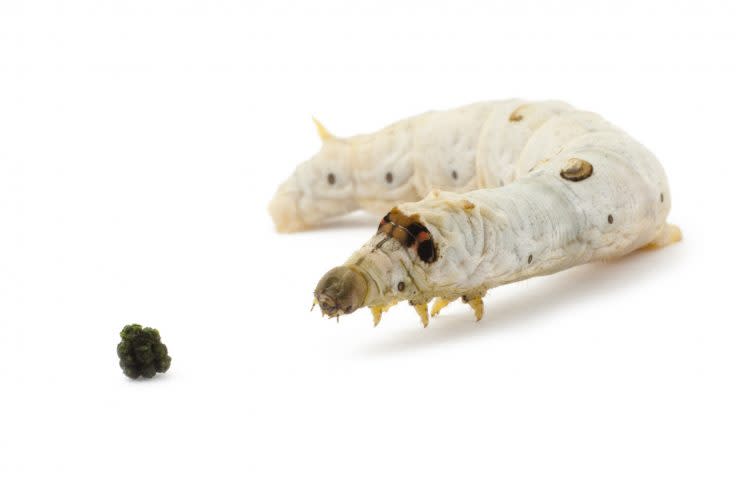Wearing Bug Poop and Mashed-Up Beetles Is the Latest Thing in Eco-Friendly Fashion

Outdoor clothing company Patagonia prides itself on environmentally and socially responsible business practices, and the label’s latest move proves how far it’s willing to push the envelope. The newly launched Clean Color Collection includes tops, bottoms, and a jacket all manufactured using natural dyes from renewable resources — and a few of those resources include the “poop of silkworms” and “dried beetles,” according to HuffPost.
The dyes, which the company calls Earthcolors, sidestep the toxic chemicals found in dyes used by many major clothing manufacturers. In 2012, Greenpeace brought to light the issue of hazardous textile dyes in its report “Toxic Threads: The Big Fashion Stitch-Up.” The report revealed that many fast-fashion companies — including Zara, Levi’s, Mango, Calvin Klein, and H&M — were using carcinogenic chemicals routinely.

Silkworms have a unique ability to defecate in a rainbow of hues (and you thought only unicorns could!). Scientists made their discovery by feeding silkworms mulberry leaves that were sprayed with fabric dyes, says Popular Science. To their delight, the worms were able to poop out pre-dyed silk — in fact, their entire bodies responded to the colors they were fed.
“The team investigated dyeing silk this way because coloring fabric normally uses enormous amounts of fresh water,” which ends up getting contaminated in the process and then returned to the water supply, says Pop Sci. Though the process of using silkworm-produced dyes is not yet employed on a large scale, some green-minded manufacturers, like Patagonia, are leading the charge. Patagonia said that many of its natural dyes use less water, energy, and carbon dioxide than its competitors do.
And then there’s the dried beetles; you may want to brace yourself for this one. According to Live Science, extract from the cochineal beetle — found mainly in Peru and the Canary Islands — is routinely used to dye food (yes, food) red. “The insects are sun-dried, crushed, and dunked in an acidic alcohol solution to produce carminic acid, the pigment that eventually becomes carmine or cochineal extract, depending on processing,” the publication says. “About 70,000 insects are needed to produce a pound of dye.” Though it can be an allergen to some, carmine is considered a natural dye and is not considered unhealthy.
In addition to these seemingly icky yet socially responsible resources, Patagonia is using byproducts of food waste — including palmetto and mulberry leaves, pomegranate rinds, citrus peels, and leftover fruit — as natural dyes. The food byproducts will be used to manufacture clothing as opposed to decomposing in landfills, where they’d release methane, a severely potent greenhouse gas, says the Organic Consumers Association.
Patagonia sees this as just the latest in its push for more environmentally sound practices. In 2016, founder Yvon Chouinard published “The Responsible Company,” a guide about the hazards of the textile dyeing industry. “The textile industry is one of the most chemically intensive industries on earth, second only to agriculture, and the world’s largest polluter of increasingly scarce freshwater. The World Bank estimates nearly 20 percent of industrial water pollution comes from textile dyeing and treatment,” the guide reads.
Patagonia also launched a program this month that allows consumers to bring in used Patagonia items in exchange for store credit. “Patagonia plans on cleaning and repairing the older items and selling them at a discounted price on its new Worn Wear website,” says HuffPost, which also notes that in December, “the company donated $10 million in sales on Black Friday to numerous grassroots environmental groups.”
Read more from Yahoo Style + Beauty:
Follow us on Instagram, Facebook, and Pinterest for nonstop inspiration delivered fresh to your feed, every day. For Twitter updates, follow @YahooStyleand @YahooBeauty.


